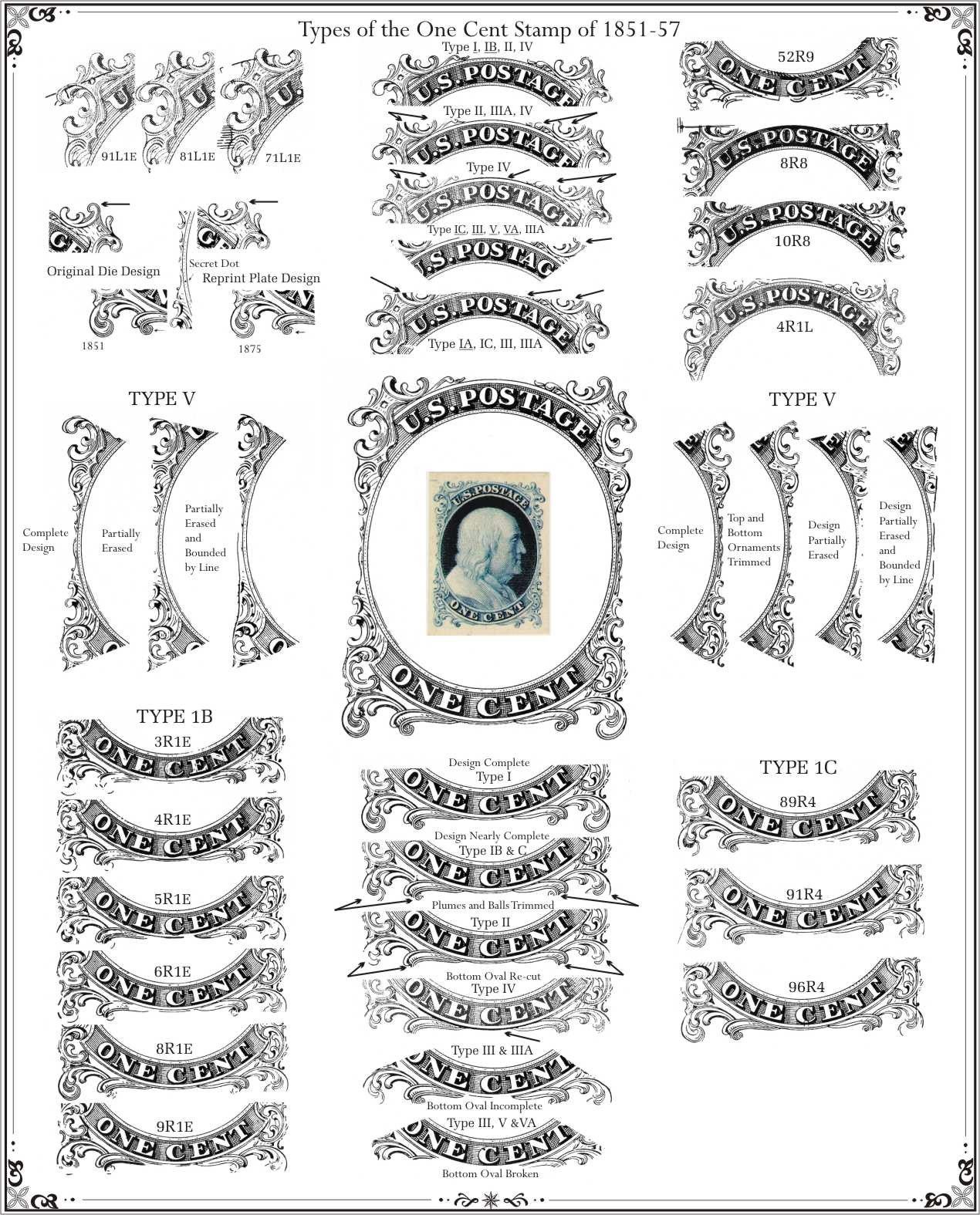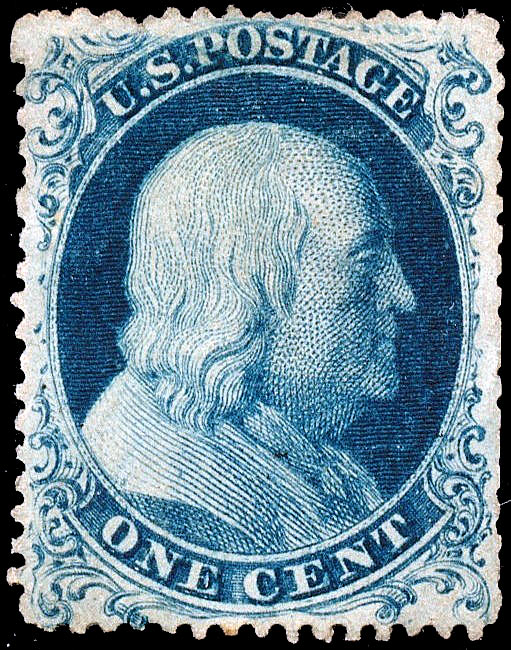Basic Info
1¢ Blue, dark blue
Printing Method: Die-to-relief-to-plate transfer process
Plate: 4 (bottom row)
Printer: Toppan, Carpenter & Co.
Subject: Benjamin Franklin
Number issued: 300,000
Perforations: 15 to 15½
Watermark: Unwatermarked
Scott #: 19
Earliest date of use 9/9/57
Value
CERTIFICATE REQUIRED
Used
$1,300 - $2,600
No postmark with gum (MH)
$4,500 - $5,750
Full perfect gum, no postmark
no trace of stamp hinge mark (MNH)
No sales recorded
Inspiration for the Design
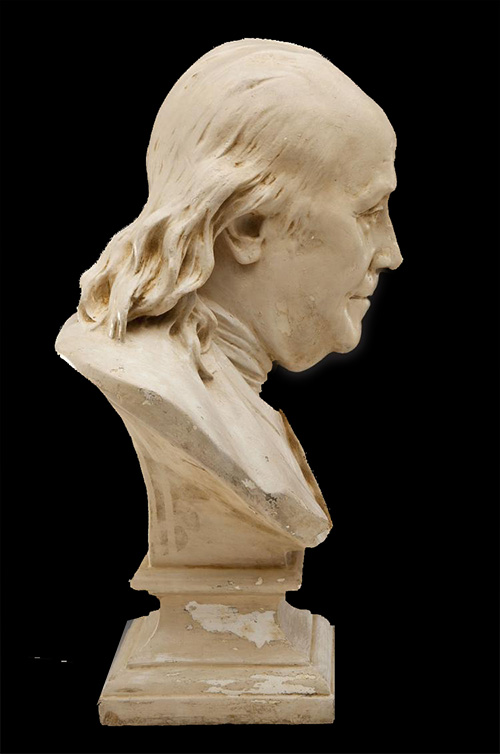
The vignette was based on Giuseppe Ceracchi's 1791 bust of Benjamin Franklin

A contemporary banknote printed by Toppan, Carpenter with the same vignette as #19
The Imprint
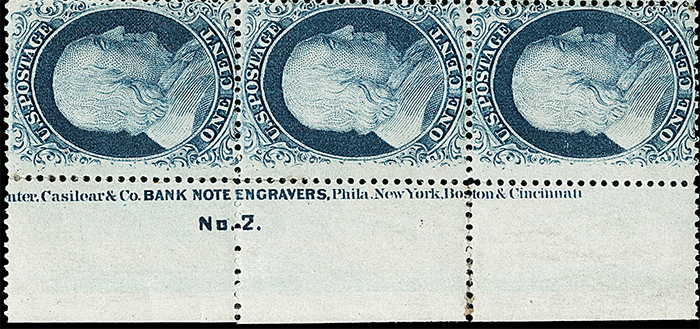
Plates 1, 2 and 4 imprint
Along the side margin of the sheet can be found the Printers imprint along with the plate number.
A full pane
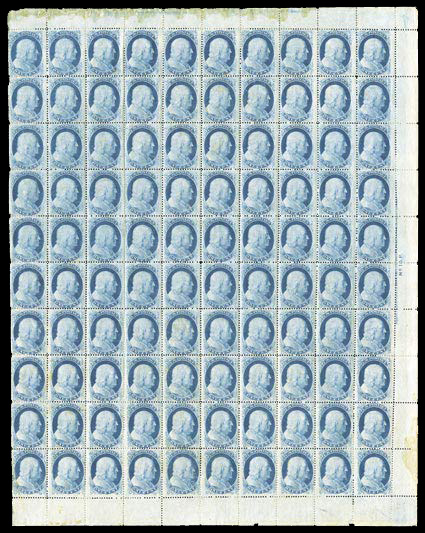
A full pane of 100 of the perforated 1857 1¢ Franklin, there are two panes to a sheet of 200
Multiples
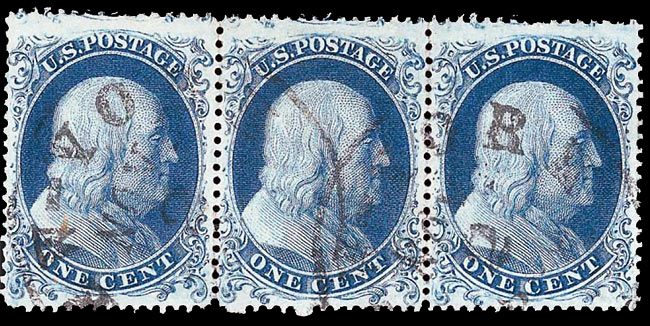
The strip of three above is shown in Brookman because it is one of the few examples where the design is clear of the perforations at the bottom. The height of the bottom row positions resulted in the perforations often cutting into the design at the bottom.
Curl on shoulder variety
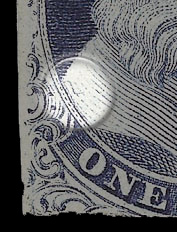
The image above shows the Curl in shoulder variety. The flaw was due to a thread being stuck to the plate Position 97L4 at the time of the printing.
Identifying #19
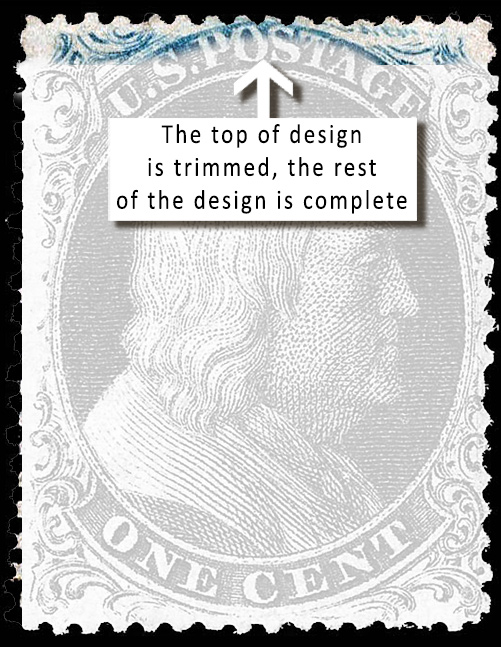
#19 is a Type Ia design. The design is the same as Type I which is a complete, design, except that the ornaments at the top frame have been trimmed.
Only one plate produced the perforated Type I stamp, that being plate 4. The stamp came from the bottom row of both panes.
The space between the designs on #19 was so tight that part of the design was almost always cut into. It would seem that late in the printing of the stamp the space between the designs was widened, thus allowing the full design to be seen. Examples of these later wide spaced stamp are rare and command a high premium in price.
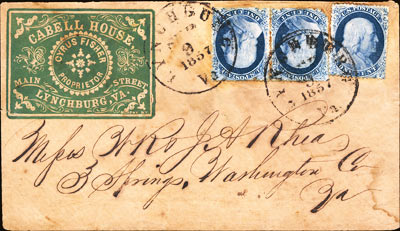
#19's earliest known date of use, September 9th, 1857
The first perforated stamps
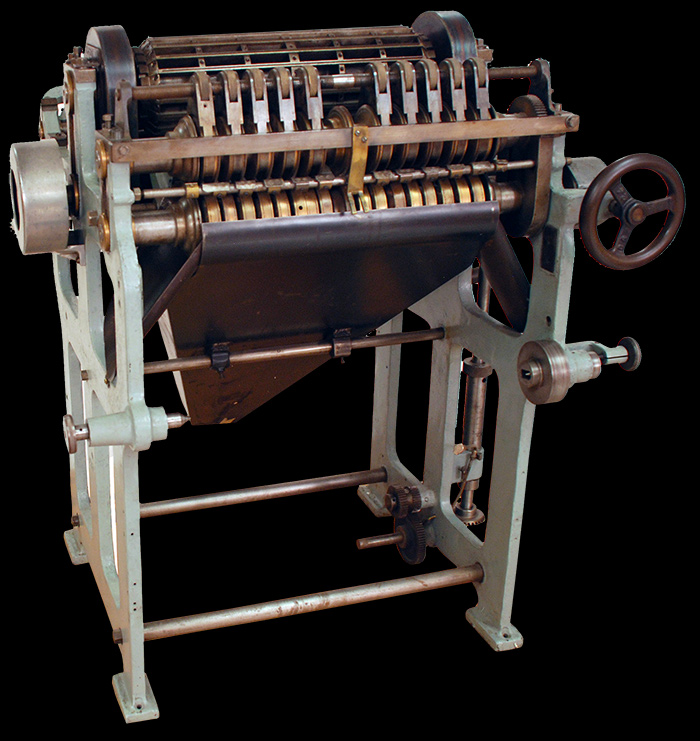
The perforating machine used on the 1857 issue
The idea behind perforating the stamps was to make the stamps easier to separate and apparently to make the stamps adhere better, although I am not sure about the thinking behind that one.
A rouletting machine was purchased from the UK. The only perforating machines were made in the UK and the British Printers, Perkins Bacon, did not want to let one go abroad. A typical British attitude at the time. So the Bureau purchased the rouletting machine. They tried it out and the result was not what they were looking for. To convert the rouletting machine to a perforating machine was as simple as swapping out the rouletting roller with a perforating roller (which had to be designed and produced). Takes less than a minute.
There was one slight problem space allowance to feed the sheets of stamps was kind of narrow. This was solved by squeezing the row of stamps into the narrower space. Something that philatelists who prize four margin stamps will forever regret.
The sheet of stamps was fed in one way to get the vertical perforations, the spacing on the perforator roll was changed and then the sheet was fed through horizontally.
Forgery

A contemporary forgery of the 1¢ Franklin
Notable Sales

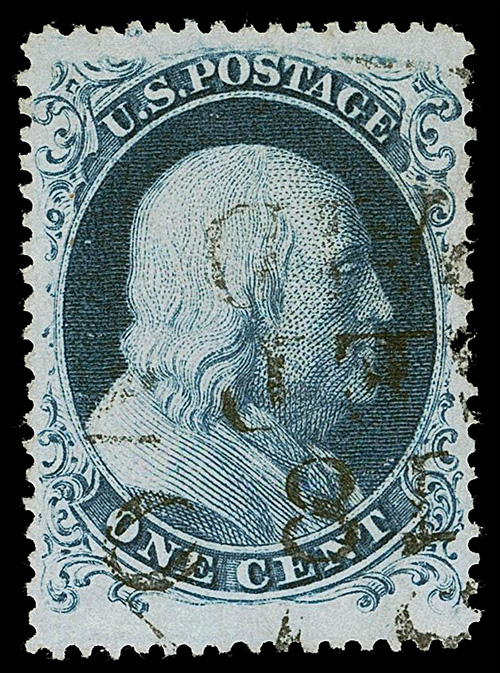
Position 92L4, with the rare wide-spaced perforations at top and bottom
Sold April 2022 for $153,400
Explore Robert Siegel's Auction Galleries
